By Christopher Wood
I have been teaching creative writing for twenty-five years, and for class assignments, have always used images to engage the imaginations of class participants. We each see an image differently; when we look at a photograph, we are looking at something literal, but how we interpret an image depends on many factors: our individual pasts, age, cultural background, regional attitude, sexual identity and probably a thousand other influences.
Here is one assignment: What comes to mind for you when looking at the photograph? Which morning would you write about? Write a poem or essay about a morning when everything was different for you, or for someone else:
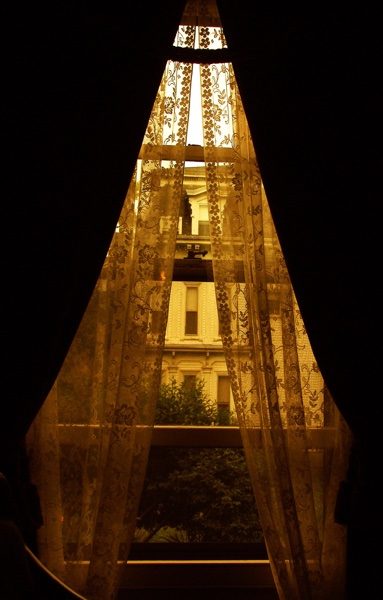
It is only recently that I have begun incorporating my own images into my writing; for most of my life, my true obsession has been with words. Over the years I have written poems, stories, plays and non-fiction. Some ideas have spanning power, and by this I mean that words and how they might be arranged, can work in one or several forms of expression. Years ago I taught a course, “Experimentation In Form,” in which students learned to express the same ideas, or to present the same characters, in a variety of ways – in a poem, dramatic stage monologue, as fiction or non-fiction, simply by adapting the original idea to a new form. It is important for a writer to experiment with different ways of expressing the same idea. While you might be a very fine poet, how can you know that poetry is your best form unless you have tried a short story, or a piece for stage? The more you experiment with form, the sooner you will discover which form agrees with you most.
I began that incorporation of images while undergoing chemotherapy treatments, when my wife, a photographer, handed me down one of her old cameras. I had always loved looking at photographs, and the best ones tell stories. The art of photography isn’t so far from writing, is it? But I had been so involved in writing for so many years, I was a bit suspect about taking photographs. Wasn’t writing vice enough? Of course it was. Did I have room in my life for another vice? I didn’t think so, but as it turned out, I did. So, little by little, one photograph after another, I began utilizing this new form of expression. I began publishing my photographs in various journals.
It wasn’t too long before it dawned on me that I could blend the two forms of writing and photography. Hadn’t I taught a course about this? So I began making picture poems. Some have other names for them, but picture poems works for me.
In one, I took a picture of an old shack in a rural area in the South. Given the area location and the history, I had a good idea that this shack might well have been inhabited by slaves at some point. If not slaves, then surely sharecroppers. So I wrote a very brief poem about the people who once lived in the shack:
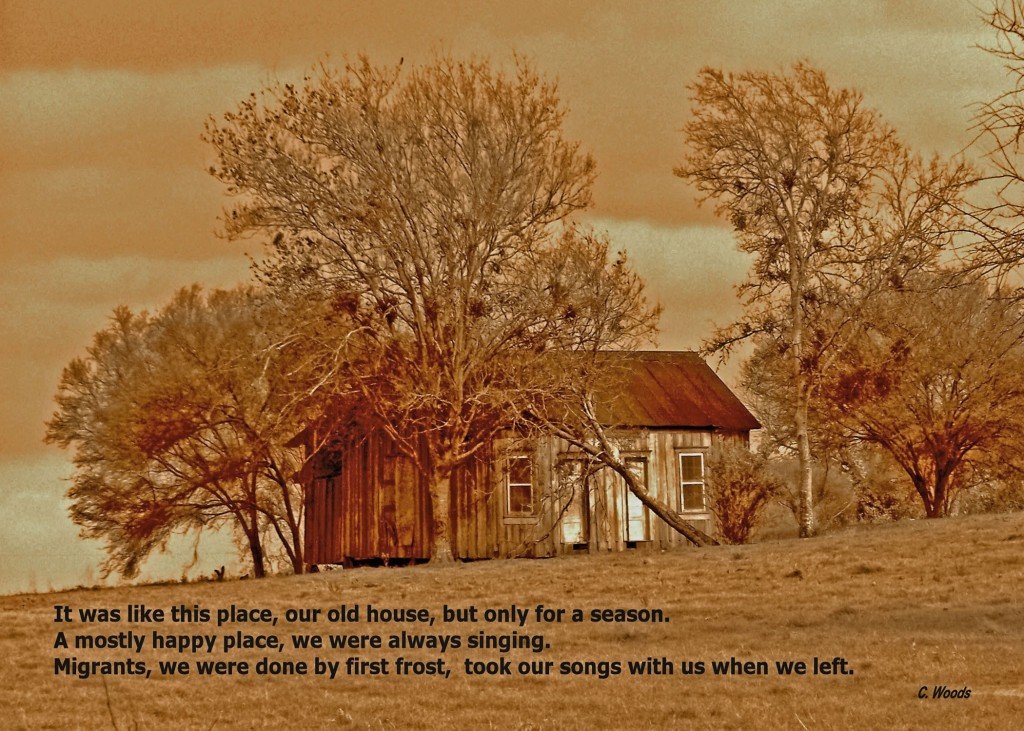
In Photoshop, it is easy enough overlay an image with text, or to use the canvas tool to create additional space for a desired text, add the words, compress the layers, then save. A simple process, but one which can blend these two forms of expression into one as a new fresh statement.
When adding words to photographs, it is best to consider what kind of text to use. For me, brevity is always best. I might write something hopefully well-suited to the image, or resort to borrowing a few lines from a previously written poem, story or essay. The combinations of words and images are truly endless. At least in this way, I can combine two vices into one, as in this picture poem, “The Attic” :
Currently I am compiling a collection of picture-poem assignments that I have used over the years. One thing I have noticed is that, as I change, the picture poems and the assignments themselves seem to have changed. They haven’t changed, not really. But I have. We all do.
So when we write about a given place or time, remember that it is very possible to write about them again later on, probably with different results. In a way, we too are different each morning. If we are wise, our creative expression will reflect this.
See Christopher Woods’ work in The Woven Tale Press
Visit Christopher Woods’ website.

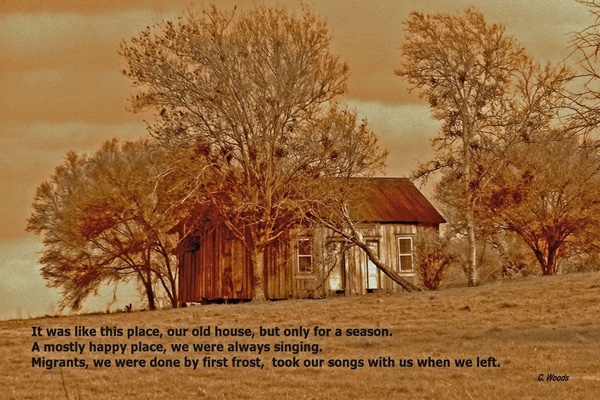
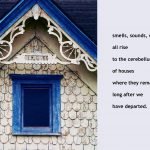
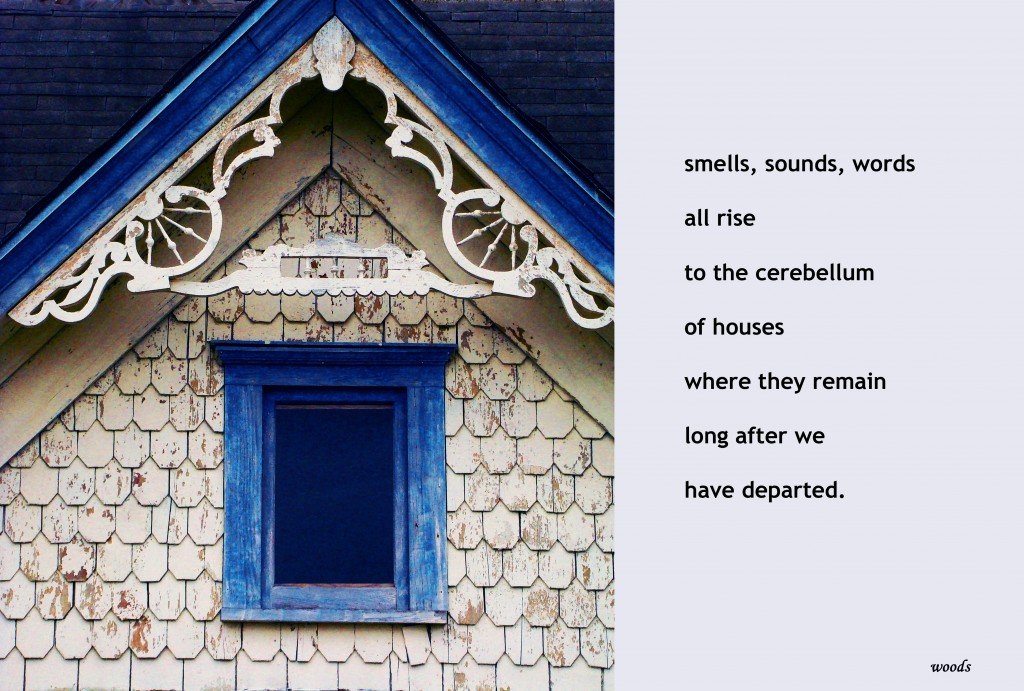
The photographs and the words are beautiful, and your suggestion well taken. Photos do influence writing in so many ways. I just finished Mary Coin by Marissa Silver, a novel inspired by the photo,The Migrant Mother,, an iconic picture from the depression. Thank you for sharing your art.
Linda,
Many thanks for your comments. I certainly know that photograph, “The Migrant Mother,” taken by Dorothea Lange. She and Walker Evans, and to a lesser degree, Eudora Welty, captured those desperate times, people and landscapes so well.
Good luck with your own work.
Best,
Chris Woods
Thank you for sharing your art! Wonderful passages.
Hey, Leigh how are you?
Leigh,
Thanks! These are a joy to make, at least most of the time. Happy writing!
Chris